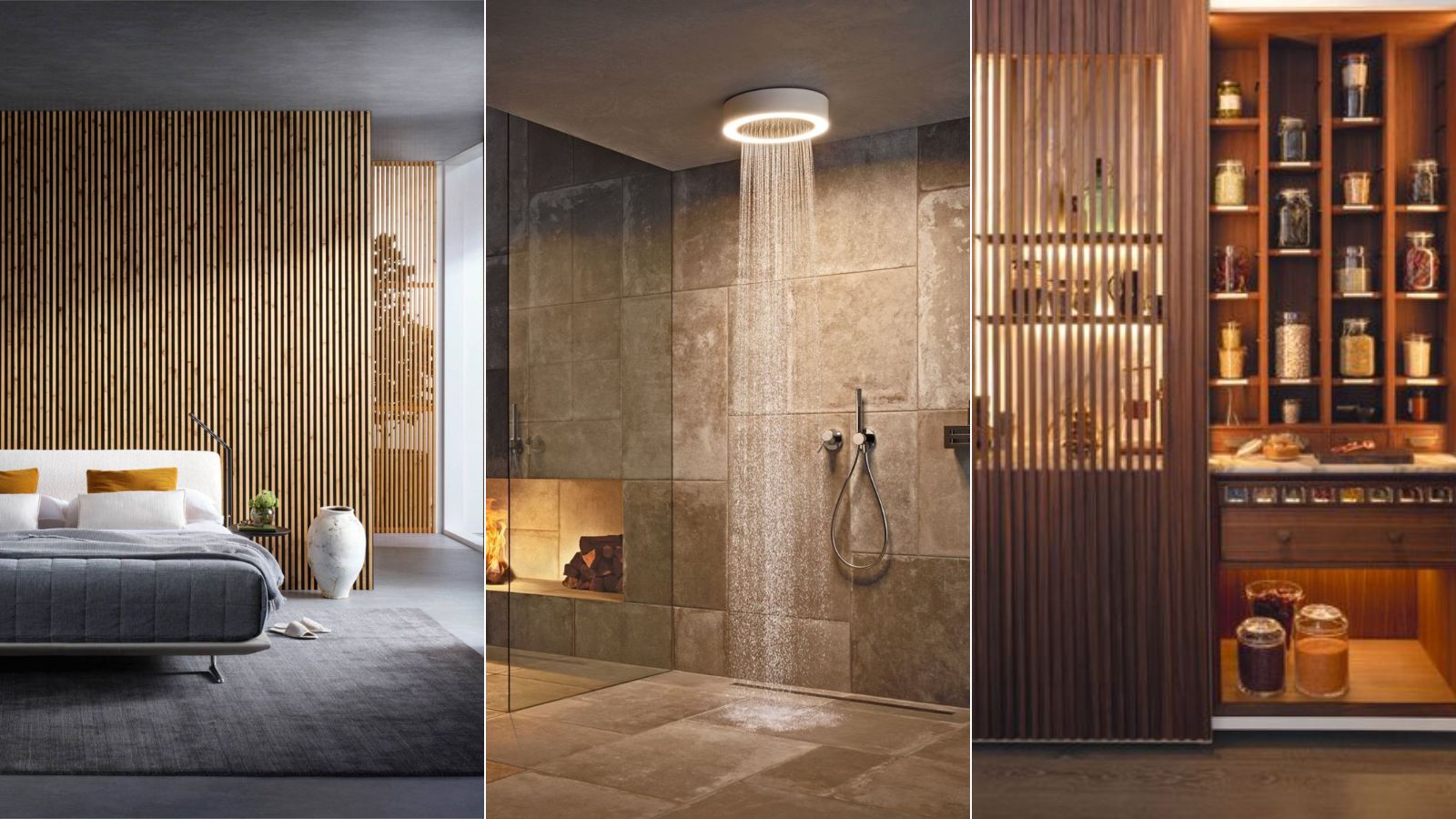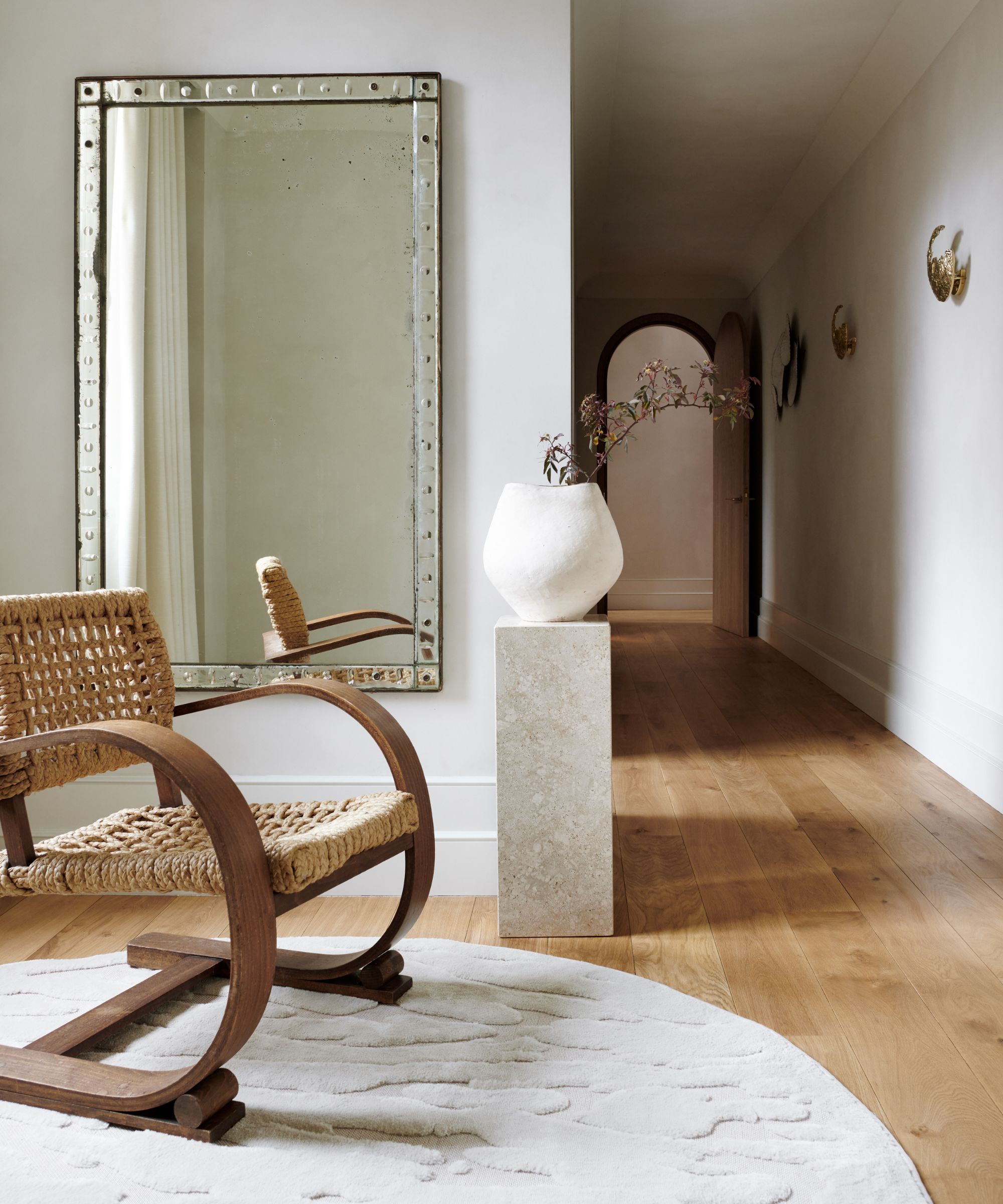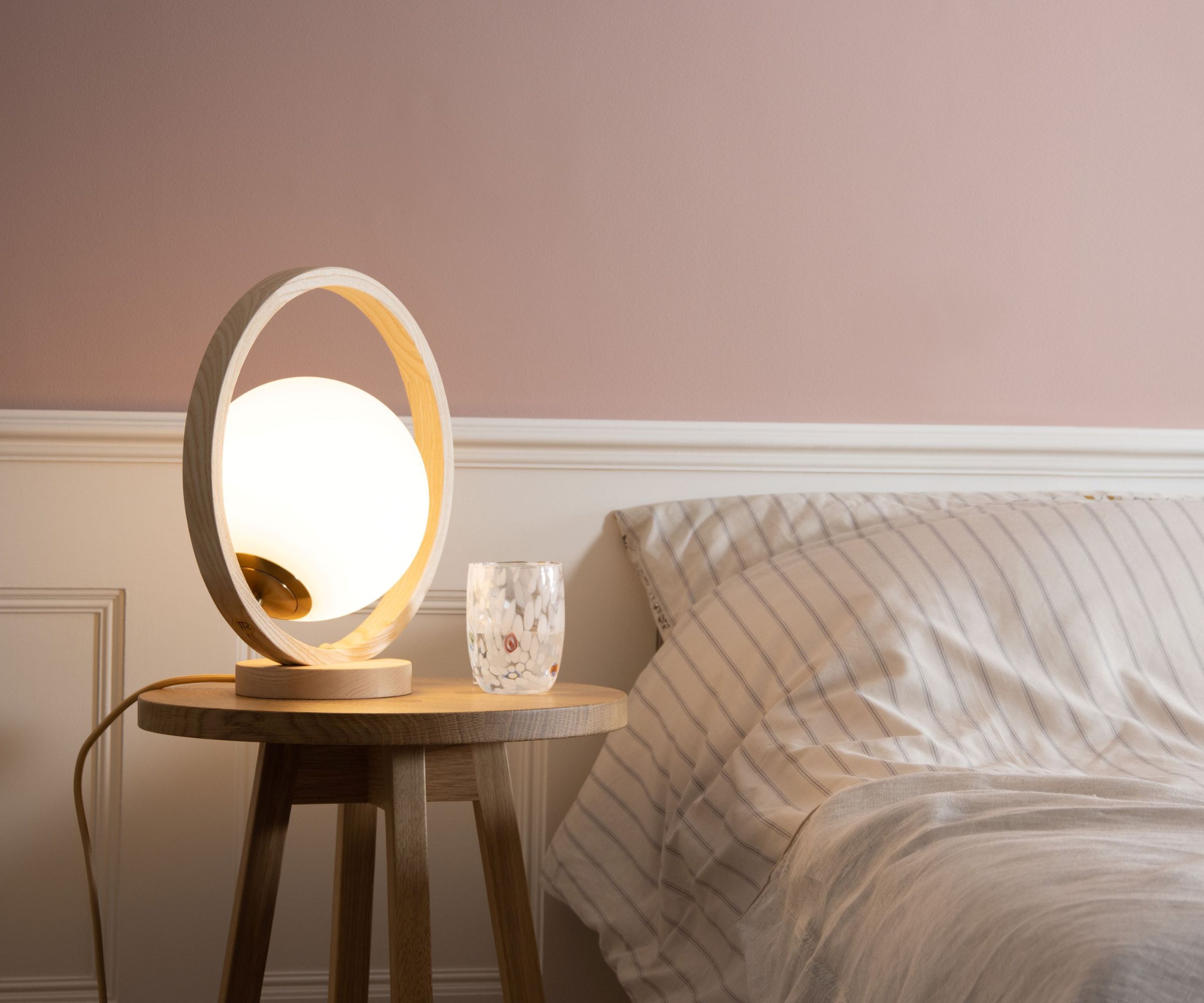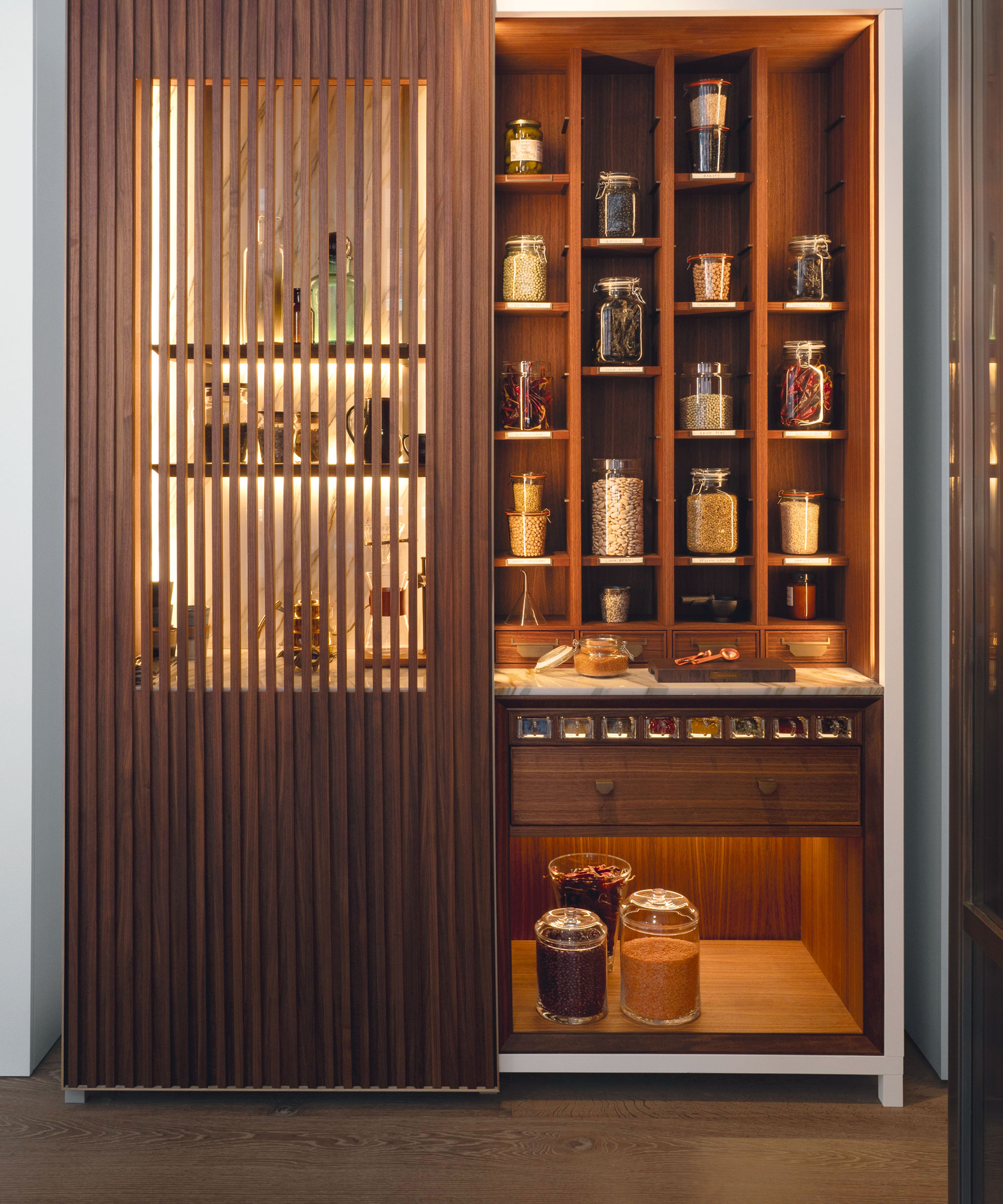5 ways you didn't know smart lighting can improve your living space and wellbeing
Smart lighting goes beyond just aesthetics and can be integrated seamlessly into your home design


Beyond illuminating your living spaces and elevating their aesthetic appeal, smart lighting can transform your home into an energy efficient, dynamic and adaptable environment.
Smart lighting technology can be integrated into your home design to cater to your task and ambience oriented needs and circadian rhythms, improving wellbeing, comfort and offering a more holistic approach to modern living.
Our experts have explained the benefits of smart lighting and their five favorite ideas you can implement to reap the rewards of this smart home must-have.
Ways smart lighting can improve your living space wellbeing
'In the realm of modern interior design, the integration of smart lighting transcends mere illumination, fostering an ambiance that seamlessly blends technology with functionality and aesthetics,' explains Elizabeth Grace, interior designer and founder of Dream Home Making.
'As experts from the interior, lighting, and smart tech fields concur, the strategic implementation of innovative lighting solutions can fundamentally transform your living space, imbuing it with an unparalleled sense of sophistication and convenience.'

Elizabeth Grace is an Interior Designer, Furniture and Home Expert. She received her degree in Interior Designing from the University of Notre Dame. Elizabeth landed her first job as an intern with a leading firm in New York City, learning from some of the city’s top designers. She currently works as an interior designer for both residential and commercial clients.
The benefits of smart lighting

There is wide a range of different smart light options, all with individual benefits that can elevate your home and improve your wellbeing.
'Many people may feel sleepy during the day and notice that they become more energetic towards the end of the day when it's finally time to sleep. The reason for this may be artificial lighting,' explains Kraig Edelman, CEO of electrical services company, Edelman. 'When natural light becomes insufficient, we begin to rely on artificial lighting, which can interfere with our biological rhythms.'
Design expertise in your inbox – from inspiring decorating ideas and beautiful celebrity homes to practical gardening advice and shopping round-ups.
'One of the key benefits of some smart lights is their ability to mimic natural daylight patterns, helping regulate your body's circadian rhythms for better sleep and overall well-being,' advises Robert Soler, co-founder of SKYVIEW Light.
'Adjusting the light intensity depending on the time of day can help those who have sleep disorders,' says Kraig Edelman.
Smart lighting systems can also adjust brightness and color temperature based on natural light levels and time of day to reduce energy consumption and lower your electricity bills.
Another benefit of some smart lighting is its ability to assist with basic daily tasks, increasing your productivity. Adjustable color temperature can provide the ideal lighting conditions for tasks, helping you stay focused and be more productive.
Dara Greaney, CEO and founder of LED Light Expert also explains that smart lighting can: 'Aid in home security, and help people with mobility or vision issues. Smart lighting can be combined with a camera to trigger flood lights for home security.'
Voice commands and app controls offer easier access to lighting adjustments and allow you to make adjustments even when you're not at home. Smart lights can be programmed to simulate your presence when you're away from home, deterring potential intruders. Motion sensors can trigger lights to turn on when someone approaches, improving safety.
You can set up schedules for your lights to turn on or off at specific times, helping you secure your home when you're away, maintain a routine, and save energy.
'For people who work nights, smart lighting can help them maintain a normal sleep schedule. Waking up in darkness can be eliminated with smart lighting timers,' says Dara Greaney.
Finally, smart lighting can be integrated with other smart devices, such as your thermostat or security system, for a more holistic and automated home experience.
Each of our top smart lighting ideas incorporates at least one of these benefits and can be a simple but effective way to improve your daily routines.
1. Automatic and motion sensor lighting

'Efficiency meets innovation with the integration of automatic and motion sensor lighting, offering a seamless and intuitive lighting solution that caters to your every movement,' says Elizabeth Grace.
Motion sensors provide the convenience of hands-free operation, simplifying daily tasks, improving home security, and keeping lights off when you leave a space to conserve energy, contributing to a more sustainable and eco-friendly living environment. You can install them in areas that only require temporary lighting, such as pantries, closets, or cabinets.
'If you're tired of navigating through unlit hallways on your way to the bathroom at night, or if you wish to enhance your home security system further, many smart lighting kits can be connected to special motion sensors to expand the possibilities,' explains Jimmy Hiller, president and CEO of electrical company, Hiller.
'Instead of struggling with light switches, envision the hallway lights automatically dimming to a low brightness as you pass a motion sensor.
'Linking smart lighting to motion triggers is also an effective way to deter potential burglars to secure your home. In the event of a break-in, you can use a companion app or software to make your lights flash red and blue as a warning signal to your neighbors, who can then contact the police or notify you.'
2. Smart natural lighting replication

Some smart lighting systems include functions designed to help you maintain your body's natural circadian rhythm by simulating the sun's changing intensity throughout the day. Circadian rhythms are the 24-hour internal clock in our brain that regulates cycles of alertness and restfulness by responding to light changes in our environment. As a result, finding smart lighting to regulate this will improve your sleep and wake times, and your general health.
'The lighting you choose for each room can have a major impact on your mood, rest, and productivity. Our body interprets different light temperatures as stimuli for different energy levels and activities,' explains Robert Soler.
'From a biological perspective, the goal is to replicate the balance of sun and sky. Bluer light in the morning (like a morning sky) will help you get out of bed with a boost of energy, so a wellness lamp or sunrise alarm clock can be helpful to have on your bedside. Think about your daily schedule and what rooms you tend to migrate to when.
'Whether you prefer light bulbs or lamps, incorporating these state-of-the-art technologies into your home can have a profound effect on lighting your space and your personal health and wellness.'

Robert Soler recommends how to integrate this into your home design:
'First thing a lot of people do right out of bed in the morning is to step into the bathroom to brush their teeth, wash their face and start getting ready for the day. Adding blue light into the bathroom can help as an added jumpstart to your day.
'Daytime light or bright light with cooler tones help signal to your body that it’s time to be alert and help with productivity so these are perfect for a home office or when you’re working on a project. You want the brightest light options to be in the rooms where you spend most of your daytime hours – maybe that is the kitchen, a workspace, or a playroom if you have children.
At the end of your day, you want to move more towards the amber colors to prepare your body for sleep. If you’re a family that unwinds in the living room before bed, try adding a few table lamps that have red or warm light bulbs to help support melatonin production and remind your body it’s time to start resting.'
With remote light control, you can change the intensity and color temperature of your lights from anywhere in the room by using your smartphone or voice commands.
As a student of psychology, I took it upon myself a few years ago to use a sunrise alarm clock, similar to this MOMILLA sunrise lamp, from Amazon, to see if I could feel the impacts of healthy light practices trying to replicate natural light cycles at home. I found less difficulty waking myself up in the morning and feeling much better rested.
'Many may not realize that light also matters at night,' says Robert Soler. 'A lot of people assume the darker the better when it comes to getting a deep sleep, and for some that may be true. But, when you’re loaded up with blackout shades, an eye mask, a noise machine, and so on, it can actually make it even harder to wake up, which can also lead to grogginess or irritability. Feeling rested isn’t just about what happens when you’re asleep, but also when and how you wake up.
'While darkness tells our body it’s time to rest, we need light to ease us awake. Your body wants to follow the lead of natural light, so consider things like automatic blind openers or wellness lamps that simulate a sunrise to gradually wake you up. A slow exposure to light will gently nudge your body awake so it won’t feel as jolting as a harsh alarm clock pulling you from deep sleep to immediately rising.
We recommend this SwitchBot Blind Tilt with Bluetooth, from Amazon.
3. Smart shower light

A smart shower light uses color therapy to keep in tune with your body's circadian rhythms while making your bathroom more atmospheric. This waterproof LED shower light can be adjusted from white light that mimics daylight for a refreshing start to the day, to a warmer tone for a relaxing shower in the evening and can be synced with smart home systems to create personalized experiences.
'You can program it to change color or intensity based on the weather or your daily schedule,' explains Kraig Edelman. 'For example, it can mimic the natural lighting conditions outside, helping you wake up gently in the morning with sunrise colors and gradually transitioning to a relaxing evening ambiance as you wind down.'
We also recommend this BestLuz Waterproof Ceiling Light, from Amazon.
4. Rise and fall lights

The beauty of smart lighting it the power of customisation, and what better way do so in key areas like kitchen and dining rooms that with rise and fall lighting?
'Harnessing the power of rise and fall lights, you can orchestrate a symphony of adjustable ambient and task lighting, creating dynamic visual dimensions within your living space,' says Elizabeth Grace. 'With the ability to modify the height and intensity of the lights, you can effortlessly tailor the atmosphere to suit various occasions or tasks.'
These fixtures can be lowered or raised to suit the task at hand – providing focused light for precision while preparing a meal, or softer illumination to set the mood for an intimate dinner gathering. This smart lighting solution is ideal for crafting an environment that seamlessly adapts to your desired mood and setting, seamlessly adapting your lighting to the moment's need.
We love this plummet pendant from McGee & Co.
5. Strip lighting

'Strategic placement of strip lighting as task lighting introduces a layer of functionality that transcends conventional lighting solutions,' says Elizabeth Grace. 'From accentuating intricate design elements to enhancing workspace productivity, the versatility of strip lighting enables you to illuminate specific areas with precision and finesse.'
As task lighting, strip lights can be installed under cabinets in the kitchen or bathroom, above workspaces in the home office, in pantries or closets, or even along the edges of staircases to improve safety and aesthetics.
'As a decorative item, you can use strip lighting to enhance the best architectural elements in your home, for example by attaching it to the undersides of your bookshelves or lining a fireplace, turning them into focal points in your living space.
Strip lighting offers directed, efficient illumination exactly where you need it, reducing glare and shadows, and enhancing functionality in task-oriented zones. You can also find smart strip lights to adjust the intensity and temperature of the light depending on the time of day it is being used.
We recommend this Tatazone smart strip light, from Amazon, which comes with a remote and can be synced to your phone or Alexa.
FAQs
How can smart lighting deter intruders?
'Intruders have learned to recognize whether there is really someone in the house, and the act of turning on lights in some rooms and the TV at full volume will only emphasize that the house is empty. Smart lighting can be configured to simulate the presence of people at home by turning lights on and off in different rooms of your house at different times to give the appearance that your house is truly occupied,' advises Kraig Edelman, CEO of Edelman.
How can backlight light options improve your living room?
Backlighting can transform ordinary features in your living room into extraordinary focal points. By highlighting artwork, architectural elements,
or even your TV, you can add depth and sophistication to your space.
'Integrating backlight options within your living space unveils a realm of visual aesthetics that accentuates the contours and textures of your interior decor,' says Elizabeth Grace, founder of Dream Home Making.
These easy-to install smart lighting features can transform your living space, whether you aim to improve your home aesthetics, create a more flexible living environment, or make daily life easier, these are the energy efficient way to improve your wellbeing and home's functionality.

Lola Houlton is a news writer for Homes & Gardens. She has been writing content for Future PLC for the past six years, in particular Homes & Gardens, Real Homes and GardeningEtc. She writes on a broad range of subjects, including practical household advice, recipe articles, and product reviews, working closely with experts in their fields to cover everything from heating to home organization through to house plants. Lola is a graduate, who completed her degree in Psychology at the University of Sussex. She has also spent some time working at the BBC.